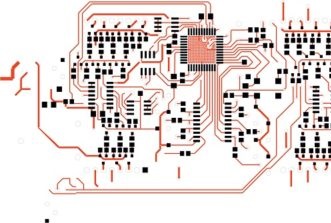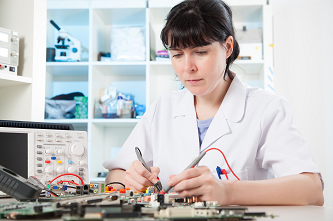This website uses cookies so that we can provide you with the best user experience possible. Cookie information is stored in your browser and performs functions such as recognising you when you return to our website and helping our team to understand which sections of the website you find most interesting and useful.
Integrated IC for Motor MOSFETs with Microcontroller, CAN, and Gate Drivers
Microchip is making waves in the field of motor control with its innovative approach of combining a triple half-bridge mosfet gate driver, a powerful 100MHz processor, and a cutting-edge CAN FD interface all within the same integrated circuit (IC).
While some members of the Microchip family offer a LIN interface in place of CAN, or even no interface at all, the base model comes equipped with a 70MHz processor. The dsPIC33CDVC256MP506, one of the standout versions, features a CAN FD interface and boasts the larger memory capacity of the two variants, with 256kbyte flash and 24kbyte ram.
Under the hood, the dsPIC33CDVC256MP506 houses a CPU based on the dsPIC33CK256MP506, a gate driver utilizing the MCP8021, and a CAN FD transceiver powered by the ATA6563. Notably, the CAN FD transceiver necessitates its own 5V rail from an external source, while the CPU can derive 3.3V from an internal linear regulator capable of handling up to 29V (40V transients).
The processor at the core of this innovation belongs to Microchip's dsPIC33 'digital signal controllers' series, designed to enable advanced functionalities such as 'field-oriented control' for motors. With a 16-bit data path, 24-bit instruction path, 16x16-bit integer multiply, and rapid divide capabilities at both 32/16 and 16/16-bit levels, the CPU offers unparalleled performance.
Operating at 100MHz within the voltage range of 3 to 3.6V and across temperatures from -40 to +125°C, the CPU can also function at 70MHz up to +150°C. The motor driver, on the other hand, supports a voltage range of 6.5 to 29V and an extended temperature range from -40 to +150°C.
Peripheral features of the Microchip motor control solution include multiple timers, motor control PWMs with 2ns resolution, a high-speed 12-bit 3.5Msample/s ADC with 15 channels, three op-amps dedicated to the ADC, a 15ns comparator, and a 32-bit quadrature encoder interface.
Among the serial interfaces supported are UARTs, a high-speed 50Mbit/s SPI, I2C host and client capabilities, and two SENT interfaces tailored for sensors. The IC is designed to meet functional safety standards such as ISO 26262/IEC 61508/IEC 60730 and is compliant with automotive requirements specified in AEC-Q100 REV-H (Grade 1: -40°C to +125°C, Grade 0 to +150°C).
All versions of the Microchip motor control solution come equipped with three half-bridges, an integrated charge pump for reliable 12V gate drive, and a 3.3V LDO. These components are engineered to operate effectively up to 125°C, with the option for extended performance up to 150°C.
For developers looking to explore the capabilities of this groundbreaking technology, Microchip offers a comprehensive hardware development kit. This kit includes a dsPIC33CK low-voltage motor control development board, a 24V three-phase brushless DC motor, and an AC-DC adapter, supporting motors ranging from 12 to 48Vdc and up to 10A.
Additionally, the 'MCLV-48V-300W' board is specifically designed to power three-phase permanent magnet synchronous motors rated between 12 and 48Vdc, supporting currents of up to 25Arms/phase. A separate dual-in-line module can be inserted to configure the board for use with a specific processor.
Microchip's 'MotorBench' software, a GUI-based development tool for field-oriented control, offers a user-friendly interface for measuring motor parameters and automatically tuning feedback control gains. The latest version, v2.45, introduces the 'zero-speed/maximum torque' feature, enabling designers to optimize torque output without the need for Hall or magnetic sensors, particularly at low speeds.
Furthermore, Microchip has expanded its software offerings with Matlab Simulink models supporting various motor control algorithms and development boards. The applications of this cutting-edge technology span across automotive sectors, including cooling fans, pumps, compressors, valves, actuators, and turbochargers, as well as industrial and commercial domains such as power tools and battery-powered equipment.













